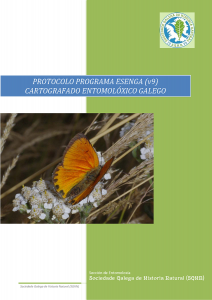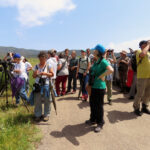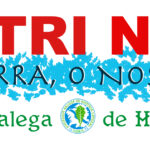The project was born in 1984 under the name of ESENGA program. The objective of this project is the knowledge of the Galician entomological biodiversity, both in alpha biodiversity (species richness) and gamma biodiversity (geographical heterogeneity), as a priority element to know which species are present and which is their geographical distribution.

Initially, work began on specific groups: Families Nymphalidae and Pieridae (Lepidoptera), Lucanidae (Coleoptera) and the subfamily Carabinae (Coleoptera), and later the order Odonata was added. These groups have the peculiarity of being accessible to an easy determination and of being considered bioindicators of the health of several biotopes.
It is an ambitious project, but the need to at least sense what lives in these geographical areas was and is abundant. Forest fires, mini plant cut off the flow of species in rivers, destruction of the country’s vegetation, invasive species and a long etcetera, are part of the problems that directly affect living organisms and entomofauna and particular. All these processes are being developed without having data on how they affect insects and biota in general, especially when we do not know what the “Galician entomofauna” is.
The first organised works aimed at an entomological mapping started from the initiative of John Heath and Jean Leclercq, who provided the basic guidelines for the collection of information, its handling and publication.
In several countries of Europe, not only atlases are published, but also reviews of them, which implies a huge and high scientific level work and immeasurable participation of many people. The British Islands and Belgium and the project called Millennium Atlas stand out in this field, where ten thousand volunteers collected more than 1.5 million records [Munguira in Shilap 30(118)].
Within the peninsular fauna, this work began with the publication of the Atlas Provisonal Lepidopteros del Norte de España (1977) by Gómez de Aizpúrua and the Atlas Provisonal Lepidopteros de Madrid (1987) by the same author, followed by two subsequent works.
With this background and being Galicia the western limit of many species due to its condition of finisterrae, the need to contribute to the realisation of this project is more than justified.
OBJECTIVES
- To map and publish all Galician entomofauna in 10 x 10 km UTM grids, as was done in the Atlas of Vertebrates of Galicia or in other published insect atlases (SGHN 1995; ASHER et al., 2001).
- To determine the phenology and ecological requirements of the treated species.
- To know the Galician entomological biodiversity, both in alpha biodiversity (species richness) and gamma biodiversity (geographical heterogeneity).
- To enhance studies of entomological biodiversity.
- To create a specialised library, open to consultation, on works and studies of Galician entomofauna.
- Along with the collection of data from the abovementioned groups, all possible data from other groups are taken to create a data bank on entomofauna in general to serve as a basis for further work or studies, both our own and those of others.
- To have criteria to propose conservation plans and thus prioritise the protection of the space and protected areas.
The last objective is to publish and to make available this knowledge to the public, as well as to promote the orderly and systematic recording of as much biological information as possible. You can find further details in Entomoloxia_Protocolo_esenga_V9. This document comes with and excel that incorporates extra data and this document: Secc_entomo_Libro_excel_toma_datos_ESENGA_V2 .
In 2015 we published the first atlas: Atlas e libro vermello de Carabini, Cycrini e Lucanidae (insecta coleoptera) de Galicia .
TAXONOMIC CRITERIA
To make easy the identification of the species, and assuming the small variations provided by the news in taxonomic research, the reference criterion will be that of Fauna Europaea (http://www.faunaeur.org).
SOFTWARE RESOURCES
- Download: arquivo excel Bio_tabularium_2020
- Free georeferencing program: http://www.qgis.org/es/site/
- Taxonomic list: www.faunaeur.org
- National Geographic Institute (IGN) Geodetic Applications Program: http://www.ign.es/wcts-app/
- Gbif Spain area with various free software resources: https://www.gbif.es/software/
Text translated by Sara Santos Trota (student of the Degree of Translation and Interpretation of the University of Vigo)






